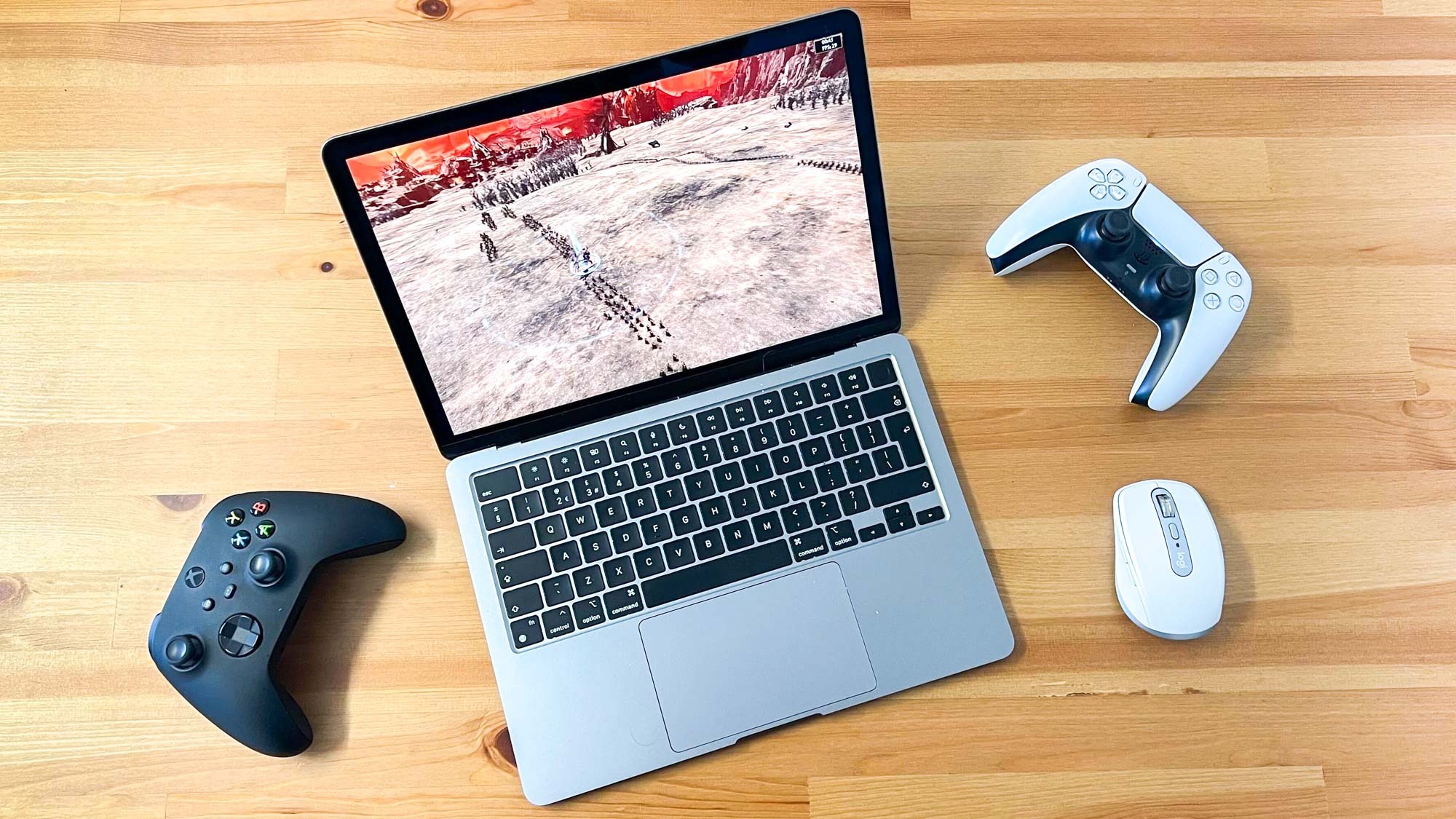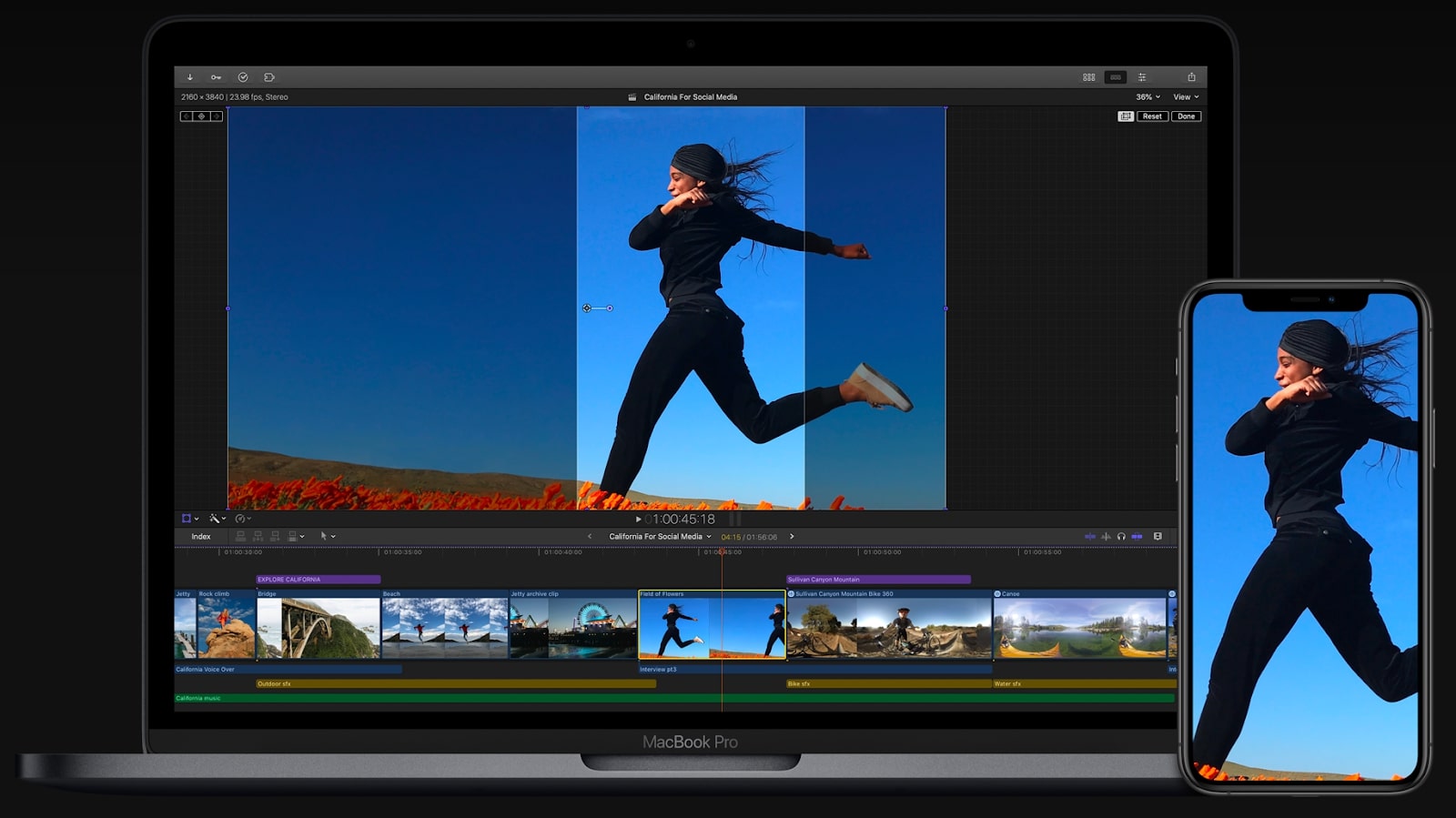Apple VR/AR headset could transform Mac computing forever — here’s how
With the power of Apple Silicon, there's a heck of a lot of potential for the Apple VR/AR headset

OK, so it’s looking ever more likely that we’ll see the long-rumored Apple VR/AR headset get revealed at WWDC 2023.
It’s tipped to cost around $3,000 and be aimed squarely at developers rather than your garden-variety iPhone user. So you might wonder why you, dear reader, should care about it.
Well, I think there’s scope for the AR/VR headset to really shake up how you use Macs and macOS.
The current iteration of Apple’s desktop operating system, macOS 12 Monterey, is about as slick as an OS can get. Sure it’s not as flexible as the likes of Windows 11, but I’ve loved using it on my MacBook Air M2, especially as I get re-familiarized with it; for the past half-decade or so I’ve been a Windows user.
So I feel it has the strong foundations to support augmented and virtual reality experiences when the headset is connected to a suitable powerful Mac; looking at you, Mac Studio and MacBook Pro. (Do note, that it's likely the Apple VR/AR headset will also work by itself, but could also be used in conjunction with Mac machines.)
A new frontier for macOS

What could those experiences be? Well. that's a good question. The leaks around the Apple VR/AR headset so far have discussed hardware, but not a lot on the software side, other than the idea that realityOS could be the name for the headset’s operating system.
As such, it’s time for speculation.
Get instant access to breaking news, the hottest reviews, great deals and helpful tips.
First off, by connecting to a Mac via a USB-C cable or wirelessly, I think the Apple VR/AR headset could be a slick way to get multiple virtual displays. This is something VR headsets on Windows machines can do, letting you navigate a virtual house with different screens superimposed on the walls.
But by blending AR and VR, I can see Apple using the headset and its rumored 12 cameras to let you see your real Mac display or MacBook and also be surrounded by virtual displays. You could think of this as something like the holographic interface projections Tony Stark uses in the Iron Man movies, or the multiple holographic displays used in the excellent hard sci-fi series, The Expanse, only without the need for futuristic holograms.
Naturally, the idea of putting on a big VR headset to do this might seem more of a hassle than using an external monitor or even the Sidecar functions with a compatible iPad. But, my hope is that Apple will evolve its headset beyond a developer unit into something that’s slicker, perhaps even a pair of AR glasses in the form of the rumored Apple Glasses.
I could also see the headset being used as a way to invigorate FaceTime calls. With the high-end display and tracking tech tipped for the headset, you could conduct things like conference or group calls in a virtual environment; perhaps using AR to blend in real-world surroundings to alleviate the feeling of standing in a video game.
Leveling up Mac gaming

Speaking of games, Apple Arcade has proven Cupertino can pull together smart and creative developers. So I’d also not be surprised if some VR gaming was also delivered through the Apple VR/AR headset when connected to a Mac.
After all, I’ve been impressed at how the MacBook Air M2 can run games, so I feel there’s some untapped VR potential in the Apple Silicon chips. I’m not expecting Apple or its developers to come up with a PSVR 2 gaming experience or titles as effective as Half-Life: Alyx.
But Apple is great at making tactile software that focuses on user experience. So I can foresee it having games that take people through slick interactive mixed reality (the blending of AR and VR) experiences. By embracing the power of the M2 Pro and M2 Max chips could deliver mixed reality games and experiences that look striking as well.
Fresh ways to edit

Macs have long been the machines of choice for creative professionals, such as video editors and graphic designers. So I can foresee the Apple VR/AR headset getting used to augment how such professionals work, say letting them better view an object in 3D.
Or rather than having one screen filled with editing timelines and panels, video editors could work in a virtual environment where the editing tools, timeline, previews and clips are distributed in panels across a virtual environment. This could make the things an editor needs readily available, just not all squashed into a single interface.
For music creation, the combination of VR and AR could let a band practice together without needing to be in the same room, using the power of recent Macs to record and mix together separate audio tracks.
Into the Apple metaverse

As Apple does tout the content sharing and interactivity its products and services facilitate, I’d not be surprised if the company’s efforts in mixed reality saw it come up with its own take on the so-called metaverse. We could see everything from meetups to share photos snapped on the iPhone 15 and beyond, to international creative pitches being carried out in an Apple-flavoured virtual environment or hub.
Of course, you might be rolling your eyes at the idea of a metaverse or collaboration in virtual spaces or even using AR to deliver virtual displays. In many ways a lot of this has been attempted before, only to find niche use or seemingly get mocked as is the case with Facebook’s Metaverse efforts.
However, I think Apple is the company to help take mixed reality into the mainstream — metaverse and all.
Not only does Apple have a very strong developer ecosystem and vast amounts of money to invest in such projects, it’s also a brand people know and trust; from creative professionals to the everyday passerby in the street. So I can see people taking a chance with Apple’s future AR and VR products and services more so than they would on a Meta Quest 2, as good as that headset is.
Apple also makes visually appealing software that just works, something that I’d say Facebook doesn't do nearly as well. If anyone could make mixed reality simple to use and understand in terms of use cases, then it’s Apple — both in terms of design and marketing.
Furthermore, unlike Facebook, Apple is a brand people trust when it comes to security and privacy. As such, I can see people being more willing to dive into mixed reality devices, experiences and services from Apple — including any form of metaverse it creates — with more enthusiasm than the efforts of other brands.
Even before that, I suspect Apple’s approach to privacy and a curated ecosystem, as well as its vast reach, will see developers embrace making mixed reality apps and experiences for Mac and realityOS. That’s not to say the Meta Quest 2 is short on apps and games, but I feel Apple has the scope, scale and extra hardware to far outpace it.
At least, that’s my hope. All this is conjecture, but I’m starting to get rather excited to see what Apple could do with a VR/AR headset and how it could evolve the way I use my Mac. Let’s hope that come June 5 and WWDC, we’ll get a serious look at how Apple sees augmented and virtual reality and where it could go next.
More from Tom's Guide
- Apple VR/AR headset price — here's why it's tipped to cost $3,000
- I tried this free Mac app and it’s a game changer
- Should you buy a MacBook M2 now or wait for the M3 chip?

Roland Moore-Colyer a Managing Editor at Tom’s Guide with a focus on news, features and opinion articles. He often writes about gaming, phones, laptops and other bits of hardware; he’s also got an interest in cars. When not at his desk Roland can be found wandering around London, often with a look of curiosity on his face.
